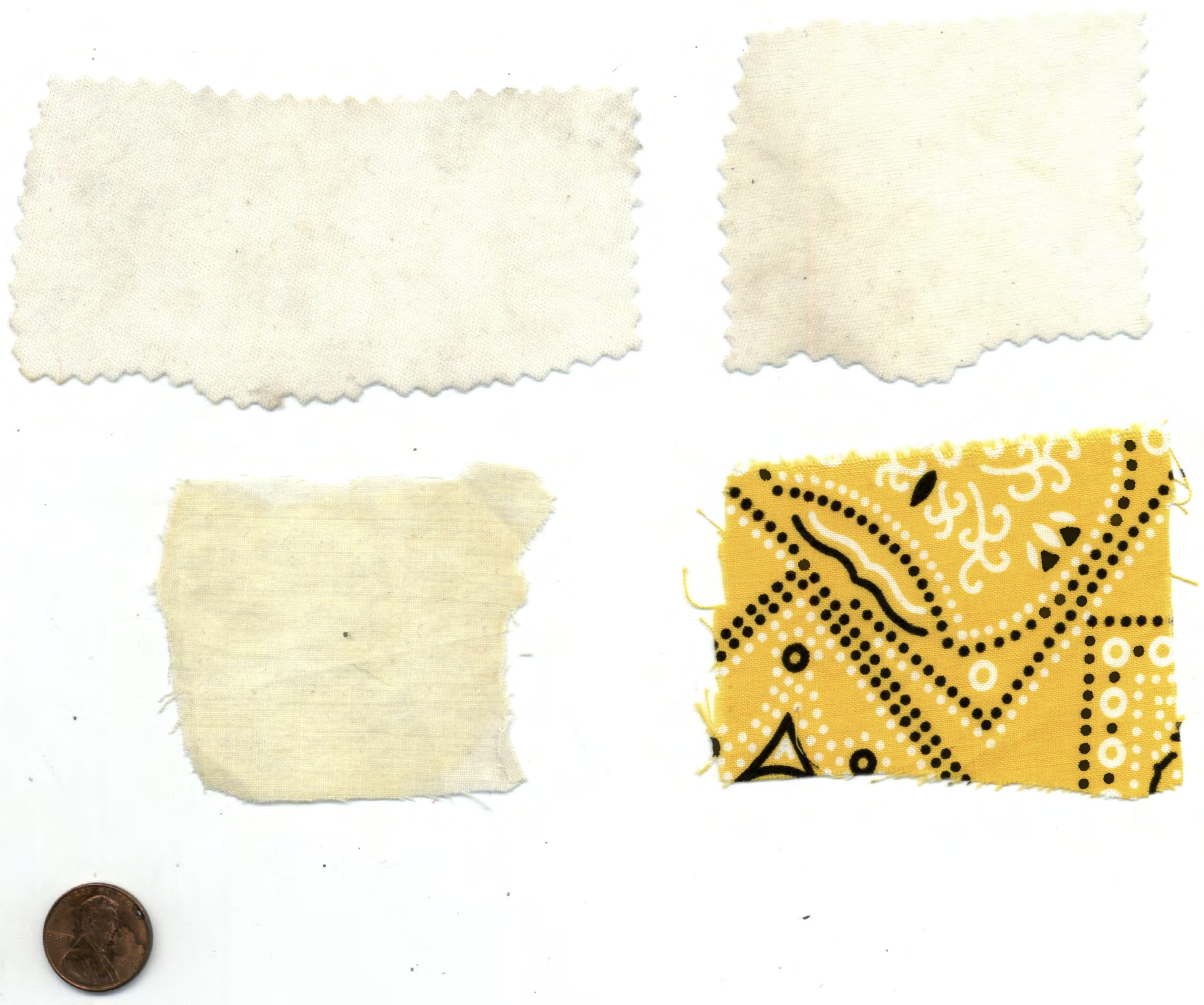[Editor’s Note: This essay resides within Anderson Blanton’s “The Materiality of Prayer,” a portal into Reverberations’ unfolding compendium of resources related to the study of prayer.]
Prayer cloths collected by the author from three Pentecostal churches in Virginia. Note the use of pinking shears to create the “teethed” ridges on two of the cloths.
Prayer cloths are the most significant devotional objects among small Holiness and Pentecostal church congregations throughout the United States. Techniques of manual imposition and communal prayer transform these textile fragments from mere remnants or pieces of detritus into sacred conduits for the healing and apotropaic power of the Holy Ghost. Once metamorphosed through the performance of communal prayer, these objects are exchanged among members of a congregation and continue to circulate into broader communal networks of belief.
At a basic level, the prayer cloth accrues social and experiential force through the exchange of hands. In terms of the private devotional manipulation of the object, the tactile sensations produced as the cloth is rubbed between the fingers or upon the surface of the body enlivens a haptic mnemonic device for the “playback” of the initial communal prayer. Sensations of divine presence and communal bonding-at-a-distance are thus actuated through this performance of devotional manipulation. At the level of temporal articulation, the physical movement of the prayer cloth as it circulates between different members of the community, and the successive deferrals, delays, and temporal lags produced through this exchange of hands, allow for an appearance of belief. Once again, belief does not have its origin within the interiorities of the religious subject, but becomes tangible, sensible, and compelling through an economy of exchange.
The performance of communal prayer, or “anointing,” cannot be abstracted from the physical process of cutting these textile remnants from a preexisting surface of fabric. Combined with the techniques of communal prayer, this rending of the fabric makes an implicit commentary on the nature and movement of the Holy Ghost. Just as a scrap or remnant of fabric can be cut from its original totality to be patched-in to another textile surface or context, the cutting of the cloth mirrors on a material level the capacity of Pentecostal communal prayer to cut-out, wrest, or excise power from the diffuse totality of Holy Ghost potentiality and to “patch” the object into the threadbare exigencies of everyday life.


